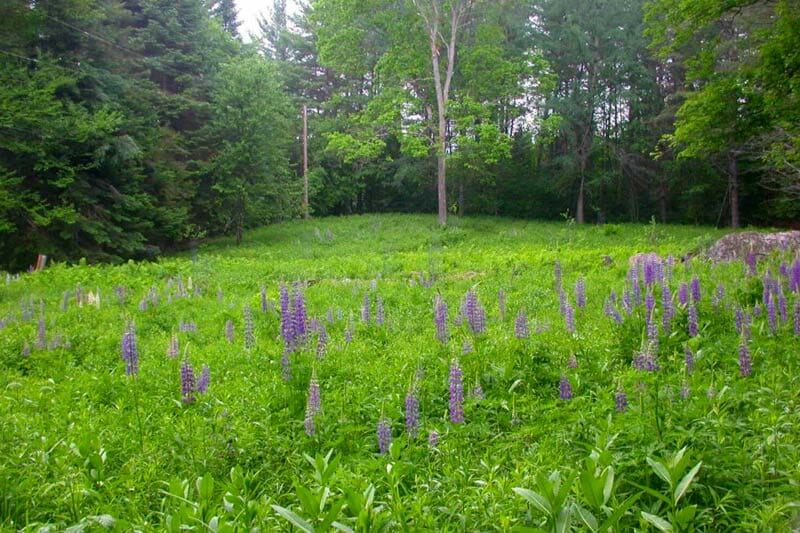Picking a drought-resistant type of grass is one of the best decisions you can make to ensure that you have a green, lush lawn all year round.
The best drought-resistant grasses are Zoysia, Bermuda grass, and Buffalo. Here are some other all-star grasses that stand out on your lawn even during prolonged droughts:
- St Augustine Grass
- Bahia grass
- Dune Sedge
- Fescue Grass
- Dwarf Wooly Yarrow
- Blue Grama
- Custom Yard Meadow
Grasses on your Southern California lawn should be able to handle full sun and drought conditions. These types of lawns will require less frequent watering, which can help reduce your water bill and maintain the green color throughout the summer.
What we cover
ToggleLawngrass/Zoysia Grass
Botanical Name: Zoysia japonica
USDA Growing Zone: 6–11
Color: Light to medium green
Mow height: 1.5 – 2.5 inches
Cost: Sod costs $0.5 per square foot
Root depth: 2 feet
Mowing frequency: 5 – 7 days
Temperature tolerance: 80° F
Zoysia grass is the perfect grass to start with if you’re in Southern California because it is the most heat-tolerant of all grass species. It will do remarkably well in fun sun and dry conditions.
Strengths
During its active growing season, Zoysia typically stays light to medium green. It turns brown when winter dormancy sets in, but it stays green much longer than other warm-season grasses.
One of the Zoysia species, Pennington Zenith Zoysia keeps its green color longer than ordinary Zoysia grasses do. Some homeowners choose to overseed Zoysia lawns in fall with cool-season ryegrass for a green winter color, but others appreciate its straw-like natural hue. Come spring, Zoysia lawns are among the first warm-season lawns to green up again.
Zoysia naturally develops a deep root system, and it’s very efficient at conserving moisture and resisting drought. During short drought episodes, the grass remains green.
Weaknesses
Zoysia grass establishes more slowly than some lawn grasses, but it forms a very dense carpet of grass beneath your feet. Few lawn weeds penetrate established Zoysia lawns.
The grass spreads by above-ground stems called stolons and underground stems called rhizomes. This thick, dense growth earns favor among warm-climate sod producers and families that use their lawns heavily for lawn games and entertaining.
Zoysia grass has a very slow growth, which is why it thrives in such intense sun, but that means it cannot take a lot of traffic. It is not ideal grass for a soccer field or even for a backyard where you expect to be entertaining every weekend. If you have pets or kids, Zoysia grass may not be able to handle them either.
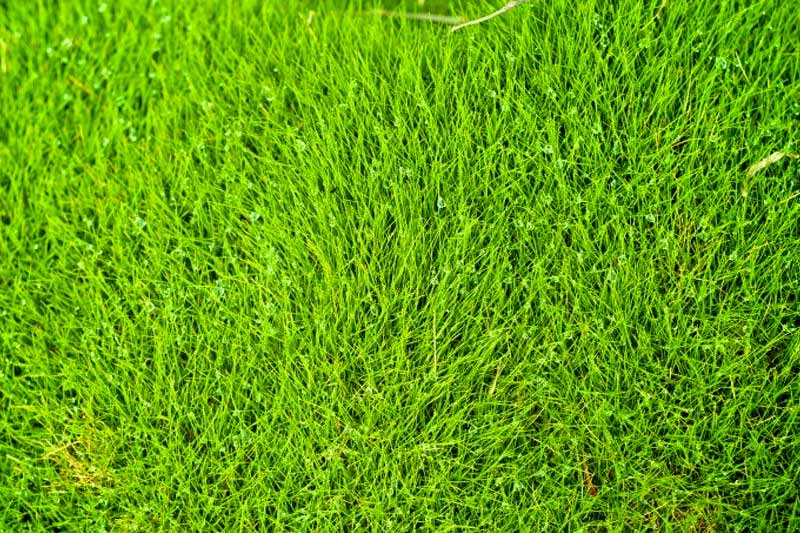
Bermuda Grass
Botanical name: Cynodon dactylon
USDA Growing Zone: 7–10
Color: Dark green
Mow height: 1 to 2 inches
Cost: $0.30 to $0.85 per square foot
Root depth: 6 feet
Mowing frequency: 5 to 7 days
Temperature tolerance: 110° F
Bermuda grass has short flat leaves, usually 10 to 40 cm (4 to 16 inches) tall. The spikelets are borne in four or five slender spikes at the tips of the upright stems. Extensively creeping stolons and rhizomes (aboveground and underground horizontal stems) enable the plant to establish a dense turf.
Strengths
Bermuda grasses perform well in drought and full sun. Unlike some other grasses on this list, there’s a Bermuda variety well-suited to your soil, no matter what kind of soil it is. Some will perform best with regular fertilizer; others actually prefer poor soil. Plus, many Bermuda grass varieties can handle a ton of foot traffic without dying out, which makes them very useful for those who love to use their green spaces.
Weaknesses
Some varieties of Bermuda grass require frequent fertilization to perform excellently on your lawn. Generally, it does not tolerate shade, and this is why it falls on this list of drought-tolerant grasses.
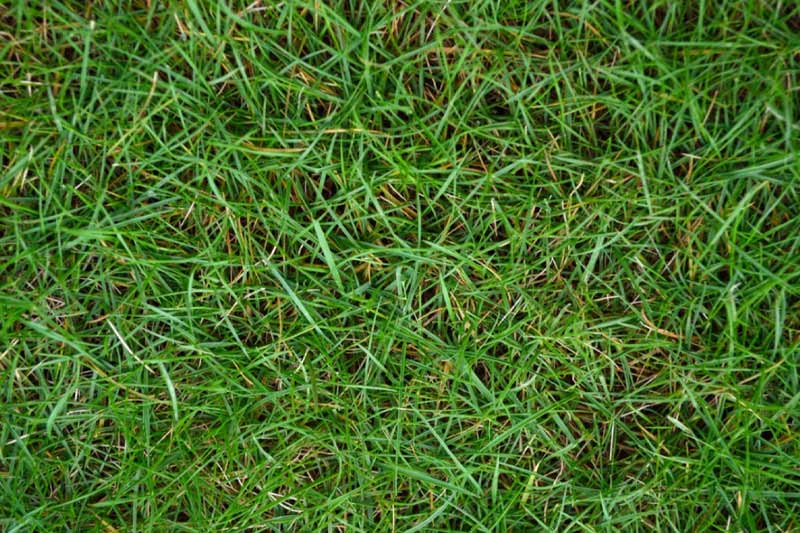
Buffalo Grass
Botanical Name: Buchloe dactyloides
USDA Growing Zone: 5–9
Color: Dark blue-green to bright green
Mow height: 1.5 to 4 inches
Cost: $10 per square meter
Root depth: 6 feet
Mow frequency: 2 weeks
Temperature tolerance: 95° F
Buffalograss is a soft, gray-green, or blue-green, perennial turf grass that grows 3-12 inches if left unmowed. It spreads by rhizomes and it is long-lived. Buffalo grass is a warm-season, sod-forming grass with curly-leaf blades, slender stems, and compact seed heads.
Strengths
Buffalo grass is a dioecious, drought-tolerant, heat-resistant, fine-textured, warm-season perennial grass that is native primarily to the Great Plains within the area from Minnesota to Montana south to Louisiana and Arizona. It is one of the dominant grasses of the shortgrass prairie.
It is commonly called buffalo grass because it was at one time regularly grazed by herds of buffalo (American bison) that once populated the Great Plains.
Buffalo grass typically grows 4-8” tall with gray-green curly leaves. It spreads by stolons. Somewhat inconspicuous green flowers bloom in summer (June -August), with male flowers appearing in comb-like spikes on slender stems rising above the leaves and female flowers appearing in bur-like clusters on short stems hidden by the leaves.
This drought-tolerant grass thrives in hot, dry climates. It saves up to 75 percent of the water used to maintain traditional grass. During the winter months, it requires no mowing and very little maintenance during the rest of the year.
Weaknesses
Buffalo grass becomes straw-colored and dormant in the winter months, while it is soft, fine, and green from Spring through Fall.
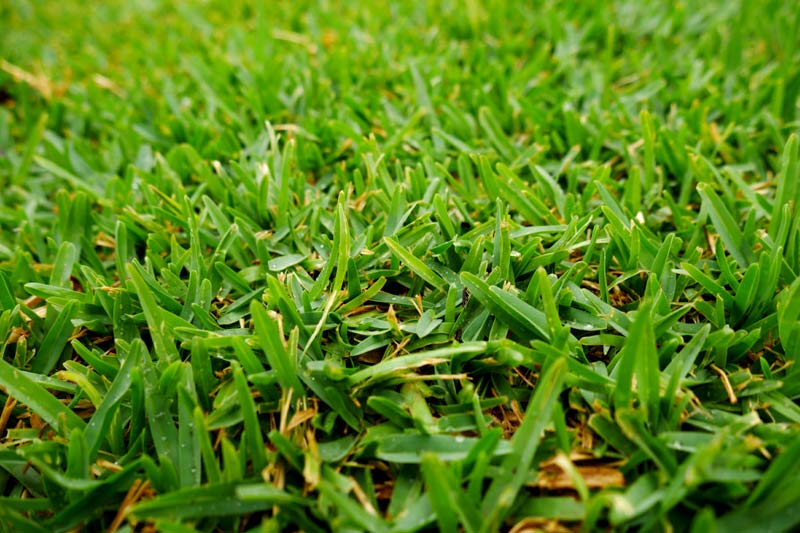
St. Augustine grass
Botanical Name: Stenotaphrum secundatum
USDA Growing Zone: 7–12
Color: Light green
Mow height: 2 ½ – 4 Inches
Cost: $0.30 – $0.80
Root depth: 3 feet
Mowing frequency: 10 – 14 days
Temperature tolerance: Max 105° F
St. Augustine does tend to keep its color well in southern California, where the winters are more on the mild side. This grass type is extremely common and quite popular in SoCal.
Strengths
This coarse-textured grass grows well even in dappled shade. It’s a popular choice for homeowners because it can handle a moderate amount of traffic and thrives in coastal areas. You should not mow too short so you don’t reduce the shade to the turf.
St. Augustine grass can handle salt air much better than most grasses. It has an attractive blue-green color and grows its leaves thickly, making for a great texture for your lawn. St. Augustine is also used in part-shade conditions, as it thrives in the shade better than most other warm-season grasses.
Weaknesses
It cannot take heavy traffic. It’s not the best grass for a public park, but it will perform well on a lawn.
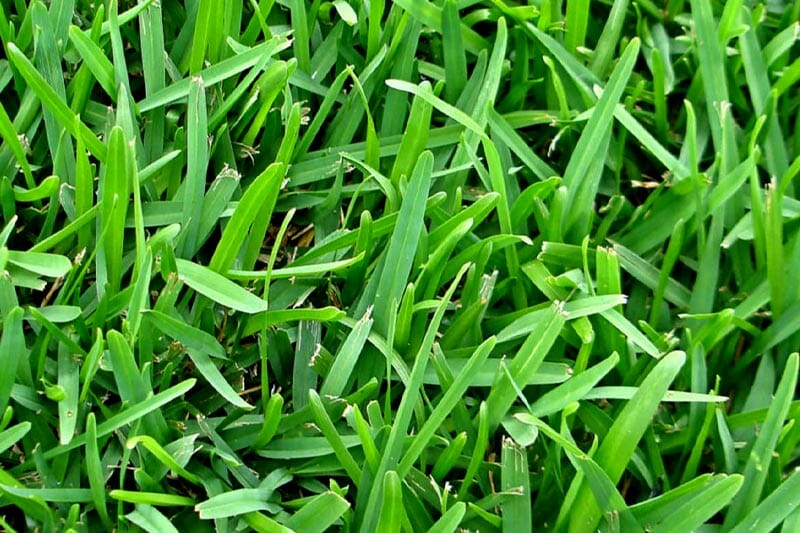
Bahia grass
Botanical Name: Paspalum notatum
USDA Growing Zone: 8 –11
Color: Light green
Mow height: 3 – 4 Inches
Cost: $0.20 – $0.40 per square feet
Root depth: 8 feet
Mowing frequency: 7 – 14 days
Temperature tolerance: 70° F
Bahiagrass is a deep-rooted, sod-forming species that is well-adapted to a wide range of soils and conditions in this region. It spreads by short, stout stolons and is a prolific seed-producing plant.
Strengths
Bahiagrass will grow on soils too poorly drained for bermudagrass and it is more shade tolerant than bermudagrass. It can be used in woodland pastures and serve as a great fit for SoCal homeowners’ lawns.
Bahiagrass has many desirable characteristics such as tolerance to close grazing, resistance to disease and insect infestations, good drought tolerance, adequate forage quality, and a low to moderate fertility requirement for the maintenance of good stands.
Though it persists in pastures with a low level of management, it responds well to proper fertility and management. If your lawn has full sun and poor soil coupled with constant drought conditions, Bahia grass may be best for you.
Bahiagrass creates very deep roots, which gives it access to water and nutrients that other grass varieties can’t reach. It can also prevent erosion, making it even more valuable on the coast.
Weaknesses
It requires a medium to low level of fertility management.
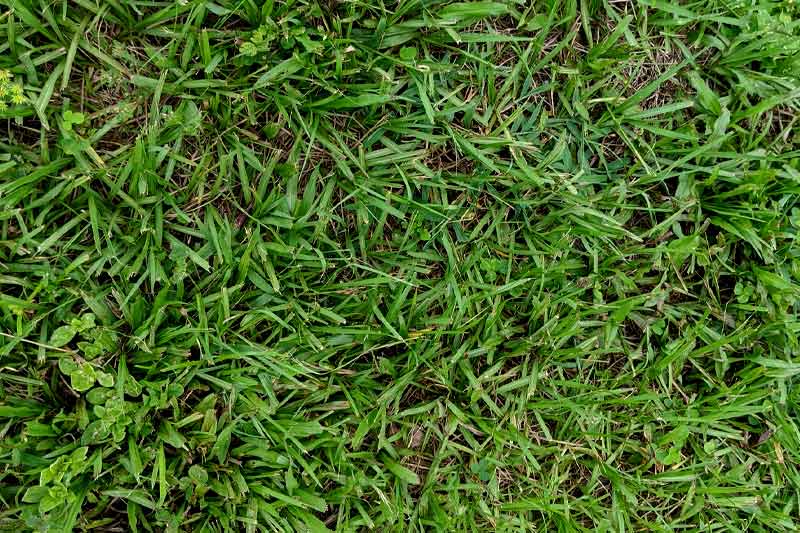
Dune Sedge
Botanical name: Carex pansa
USDA Growing Zone: 6 – 9
Color: Dark green
Mow height: 8 Inches
Cost: $9.99 per gallon
Root depth: 8 feet
Mowing frequency: 7 – 14 days
Temperature tolerance: 70° F
Dune Sedge grass is native to the coast of western North America. It is a low-water green grass that is a resilient alternative to traditional lawn sod.
Strengths
It requires 50-70 percent less water. A durable spreading sedge that can be used as a lawn substitute or unmowed meadow. It grows up to 8 -12 inches tall and spreads by rhizomes to form dense colonies of curling dark green foliage. The foliage is evergreen in mild climates and grows well in full sun to partial shade with regular to occasional water.
Weaknesses
It does not tolerate foot traffic quite as well as traditional Bermuda grass.
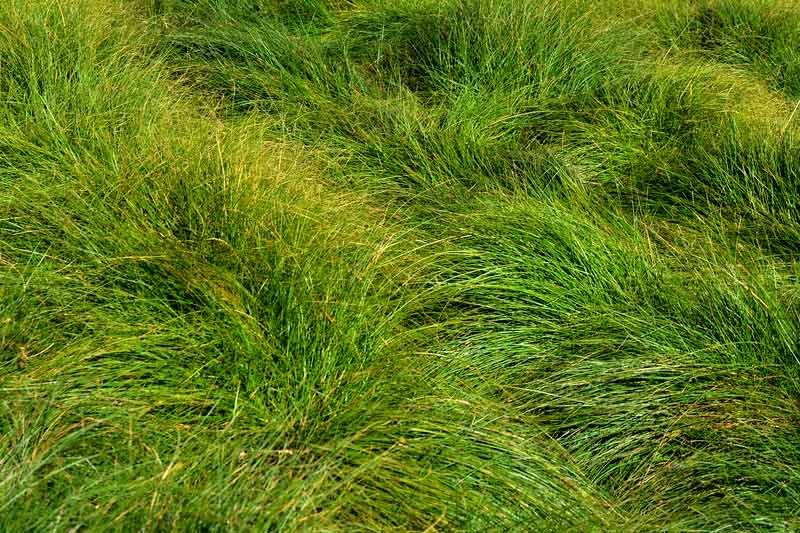
Fescue Grass
Botanical Name: Festuca arundinacea
USDA Growing Zone: 4–8
Color: Dark green
Mow height: 3 – 4 Inches
Cost: $0.35 -$ 0.65 per square meter
Root depth: 3 feet
Mowing Frequency: Weekly
Temperature tolerance: 65° F
Fescue is the best option for you if you want a low-maintenance lawn and live in a cooler region.
Strengths
It is far more resilient to cold winters than any of the warm-season grasses, and it tolerates the heat well as long as it gets enough water. Most Fescues are slow-growing, which means less time spent mowing and more time spent enjoying your yard.
Weaknesses
Fescue needs between one and two inches of water per week to stay lush and vibrant.
Prolonged droughts will weaken Fescue, although it usually takes several weeks of extreme heat and drought to wilt noticeably. Fescue tends to struggle during the summer months, making it especially important to water religiously when the weather heats up.
One other Fescue’s main weakness is that it’s vulnerable to foot traffic, so even if it takes slightly more effort to tend to a mixed-grass lawn, most people find it worth it.
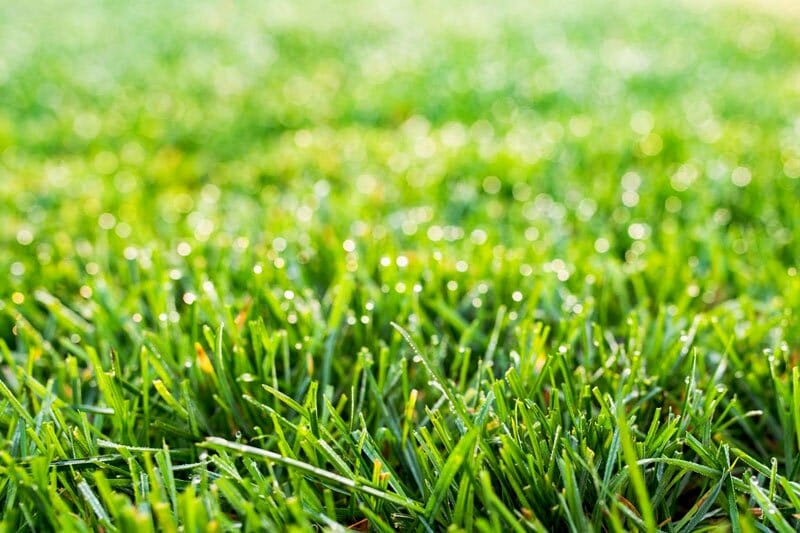
Native California Bentgrass
Botanical Name: Agrostis pallens
USDA Growing Zone: 5 – 9
Color: Deep green
Mow height: 1.5 – 2 Inches
Cost: $0.5 -$ 0.7 per square meter
Root depth: 4 feet
Mowing Frequency: 10 – 14 days
Temperature tolerance: 48° F
Bentgrass is native to western North America from British Columbia to Montana to California, where it grows in many types of habitats. In California, it is widespread except for the central valley and deserts.
Strengths
Bentgrass is a perennial grass growing 10 to 70 centimeters in height, sometimes from a rhizome. The leaves vary in width and length but are generally not more than 5 centimeters long. The flower cluster is a narrow array of thin branches bearing small clusters of spikelets, each spikelet being just a few millimeters long.
It is deep green and can be used as a lawn substitute. Bentgrass has medium leaf blades, can be mowed if desired, requires half the water of non-native lawn grasses, and tolerates some foot traffic.
If mowed, the look would be similar to the edge of a golf course fairway. If not mowed it will have a meadow look. This grass is becoming more available through commercial seed vendors as people look for alternatives to non-native lawn grasses.
Weaknesses
Bent grass has a high maintenance requirement. It requires frequent mowing, high amounts of fertilizer, and a lot of water. It is best mowed using a reel mower due to its low mowing height requirements. It also has a low-temperature tolerance and its maintenance can be challenging without skill and patience.
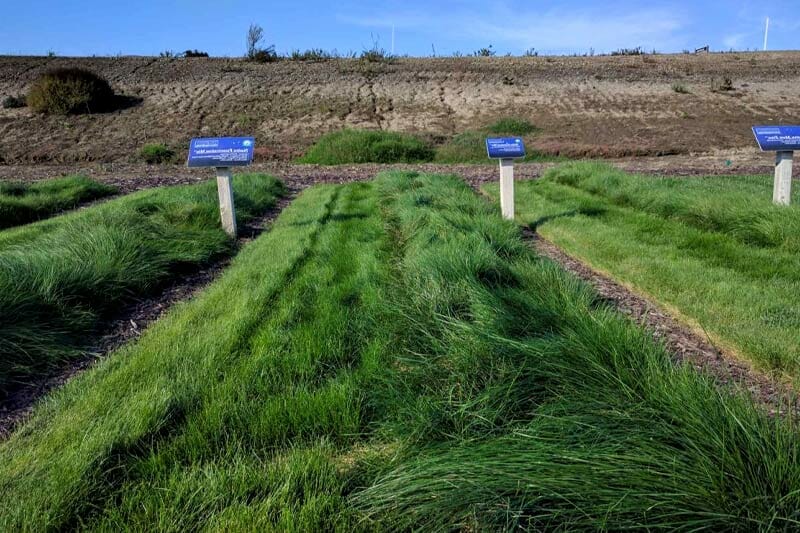
Dwarf Woolly Yarrow
Botanical Name: Achillea tomentosa
USDA Growing Zone: 3 – 9
Color: Blue-green
Mow height: 8 Inches
Cost: $4.99 per 1000 seeds
Root depth: 8 inches
Mowing Frequency: 10 – 14 days
Achillea tomentosa, commonly known as woolly yarrow, is an evergreen, mat-forming perennial that typically grows to 6-12” tall spreading to 18” wide or more. It is best known for its yellow flowers, fern-like foliage, fragrance, and horizontally-spreading habit. Flowers bloom from late spring to early autumn.
Strengths
Yarrow is flowering, fern-like foliage and it requires half the water of a traditional lawn.
It is a drought-tolerant native that creates a beautiful ground cover.
It thrives best with hardscaping such as gravel pathways or stone footpaths to reduce foot traffic on the plant itself.
Yarrow is very diverse and comes in colors from green to silver with yellow, pink, or salmon-colored flowers.
Weaknesses
Yarrow doesn’t tolerate very much foot traffic. It has an aggressive growth and can become invasive if not trimmed or mowed frequently.
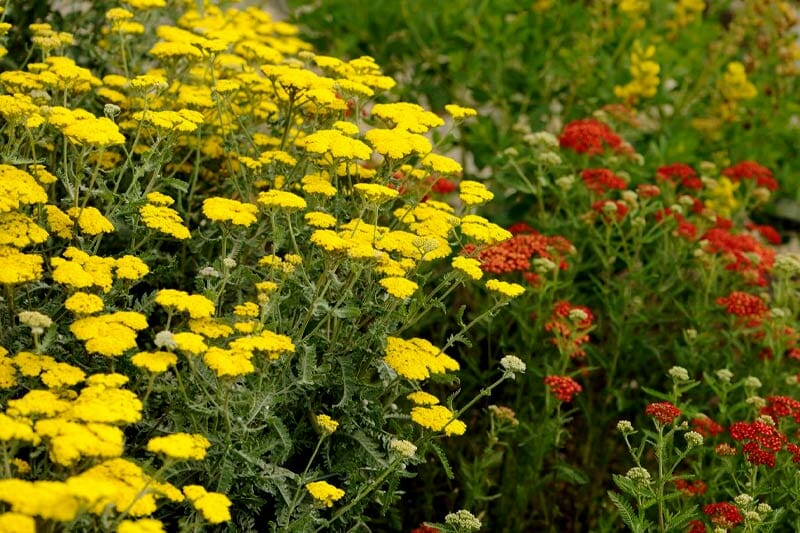
Blue Grama
Botanical Name: Bouteloua gracilis
USDA Growing Zone: 3–10
Color: Blue-green
Mow height: 2-3 Inches
Cost: $2.81/Ounce
Root depth: 12-18 inches
Mowing Frequency: twice a week
Temperature tolerance: 85° F
Blue Grama is a warm-season grass with a similar drought tolerance to Buffalo grass.
Strengths
Needs the least amount of water when left tall, a great combination for people who want a no-fuss lawn care experience.
Blue grama can survive on as little as seven inches of water per year, making it the perfect choice for dry climates like SoCal.
It needs a moderate amount of direct sun per day, between four and six hours on average.
Weaknesses
Blue Grama needs to be watered sparingly. It is common for people to mix Blue Grama with Buffalo grass to help maintain even ground coverage in wider conditions since Blue Grama tends to grow in clumps when the soil is dry.
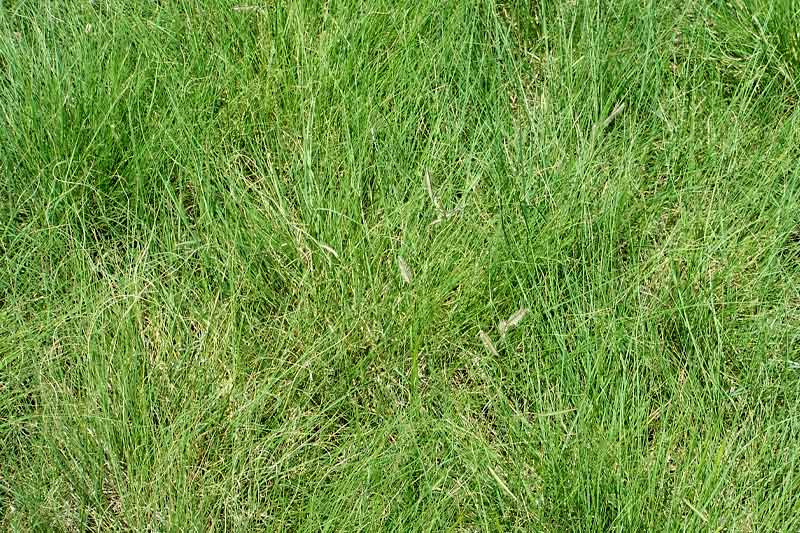
Custom Yard Meadow
A meadow is a combination of different wildflowers, grasses, and native plants. Meadows are one of my favorite drought-tolerant lawn alternatives. The meadow follows the laws of nature and therefore requires very little water or maintenance outside of periodic thinning and adjustment to suit your preferences.
Strengths
Replacing your lawn with a meadow is a beneficial option for surrounding ecosystems due to its high biodiversity. It creates a habitat for plants and animals which can be aesthetically beautiful as well as a good educational opportunity for children. It is best to grow a variety of plants that are found around your home and local environment.
Weaknesses
Since it is a combination of different plants, it may be difficult to figure out the optimum temperature that will support the health and survival of all of them.
